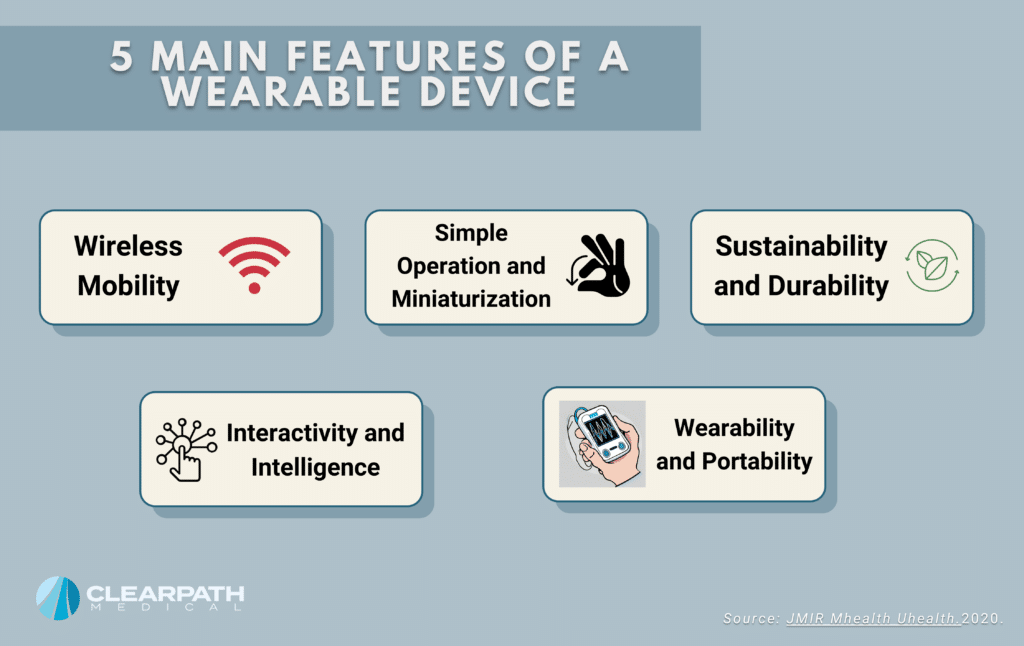Wearable technology, originating in the 1960s with MIT professor Edward O. Thorp’s invention, has grown remarkably, particularly in healthcare.
Made for easy health tracking, wearable devices include tools like watches, ECG monitors, blood pressure trackers, and biosensors. These devices are crafted to let people easily monitor different health measurements. Notably, recent advancements, including innovations like insulin patches, are expanding the potential applications of wearables. This integration of advanced health monitoring technology also intersects with the development of cable assemblies, making a smooth system to gather and send important health information.
This month, ClearPath Medical’s blog explores the opportunities and limitations of wearable technology, shedding light on its entry into space. It also presents a unique perspective on how ClearPath Medical is at the forefront of modernizing healthcare, partnering with other medical device companies to enhance outcomes, reduce costs, and increase efficiency.
Key Features of Wearable Devices
According to an article from the National Library of Medicine, here are five main features that classify a wearable device:
- Wireless mobility
- Simple operation and miniaturization
- Sustainability and durability
- Interactivity and intelligence
- Wearability and portability

Amidst the evolving landscape of wearable devices, a crucial question lingers: How can we ensure their safety?
Biocompatibility supersedes the utility and function of wearables and shows a dedication to achieving patient comfort. Comfort, of course, is significant given that individuals commonly wear these devices for a upwards of 30 days. Biocompatibility for us not only means a focus on form, but strict adherence to rules like ISO 10993-5 & -10, checking for skin irritation and sensitivity.
Read more about biocompatibility from our previous blog.
Harnessing Advantages: Opportunities in Wearable Device Technology
- ECG devices offer cost-effectiveness: Wearable ECG Monitors provide a cost-effective alternative to traditional monitoring methods, making healthcare more accessible.
- Improved accuracy and efficiency: Wearable technology offers more accuracy and faster ways to obtain data, enhancing the quality of.
- Diverse Applications: Advancements in wearable technology extend to applications like insulin patches, contributing to the diverse landscape of healthcare technology.
- Patient Preference: Their ease of use and convenience make them preferable, resulting in greater patient compliance.
While wearable devices present promising opportunities in healthcare, it’s essential to recognize the potential limitations associated with their widespread adoption.
Navigating Challenges: Wearable Device Limitations and Discourse
- Insufficient evidence for screening: The Preventive Services Task Force, an independent panel of primary care and prevention experts, has concluded that insufficient evidence exists to assess the balance between the benefits and harms of using ECGs as a screening tool.
- Patient Privacy Concerns: Questions are being raised about data security and patient confidentiality.
- Difficulties in handling: Some populations may face limitations due to difficulties handling the devices, highlighting the need for user-friendly designs.
- Unpredictable outcomes: Unlike the controlled environment of healthcare spaces, using wearable devices at home introduces unpredictable outcomes.
Striking the right balance between technological advancements and protecting patient information will be pivotal in realizing the full potential of wearable devices in healthcare. More research, testing, and prototyping are continuing to be done to ensure positive outcomes.
Wrapping Things Up
At ClearPath Medical, we take pride in our commitment to quality in the medical device space and have successfully contributed to numerous wearable device projects. Specializing in cable assemblies for wearable devices, we prioritize patient comfort and underscore the use of biocompatible solutions. As medical devices trend towards advanced wearability, ClearPath aims to contribute in redefining healthcare through our modern cable assemblies. Collaborations between industry leaders, healthcare professionals, and innovators will be instrumental in harnessing the full potential of wearable devices, shaping the healthcare landscape for years to come.
Contact us today to explore how ClearPath Medical can help bring your next wearable device with biocompatible assemblies to fruition.
Thanks for reading! Here are some more ClearPath Medical blogs that might interest you.
Love what you see? Sign up for our newsletter to get the latest updates on our company, worldwide and more. Be sure to also follow us on LinkedIn for company updates, news, and more!

